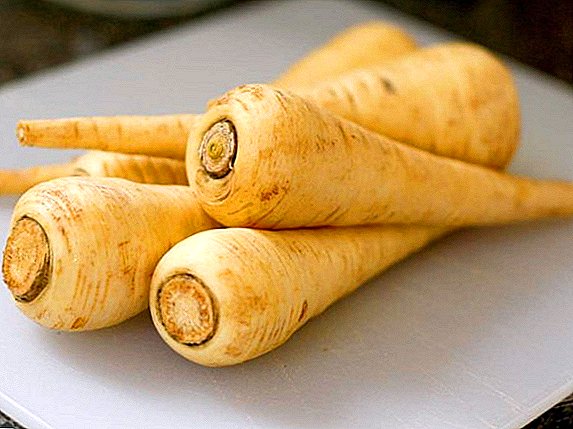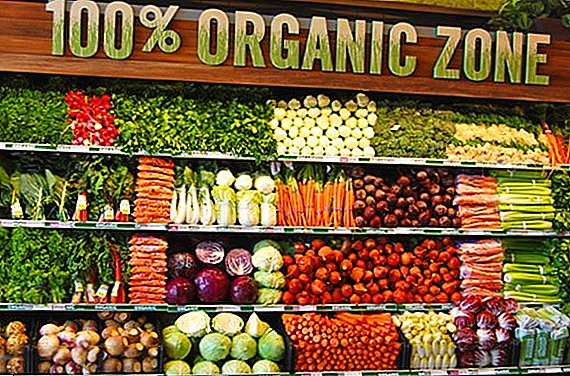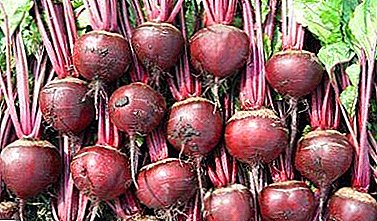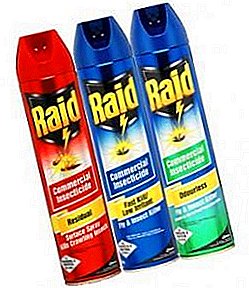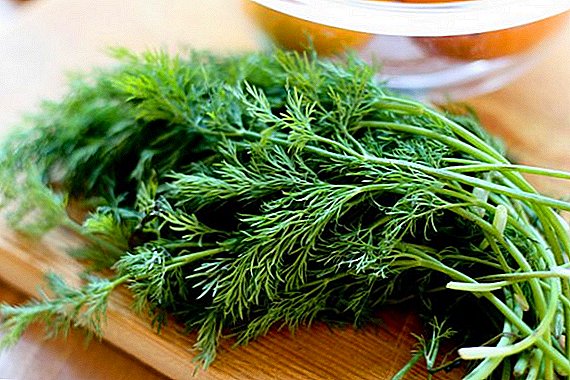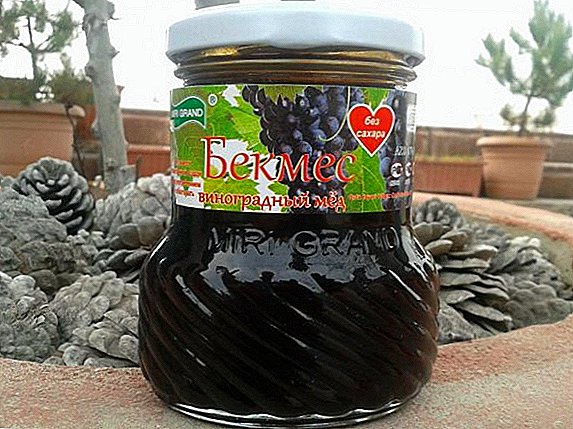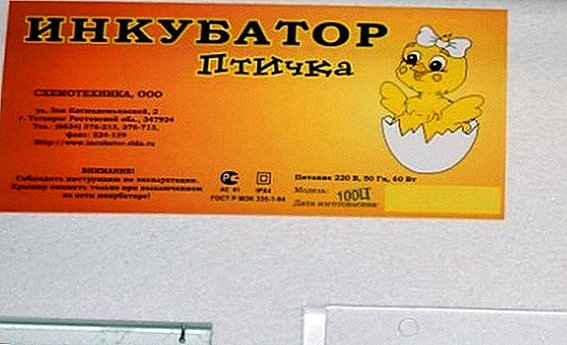 The first incubators for breeding poultry appeared in ancient Egypt and China. They allowed to increase the livestock of agricultural poultry, get more meat and eggs, and the breeding of chickens has ceased to depend on the quality of hens and other factors. In modern poultry farming, incubators are used for the semi-industrial and industrial type households. Incubator "Bird" is designed for the withdrawal of the party of chickens from 100 pieces. The manufacturer of the unit is OOO SchemoTehnika (Taganrog). On the features of the "Birds" and the process of incubation, read this article.
The first incubators for breeding poultry appeared in ancient Egypt and China. They allowed to increase the livestock of agricultural poultry, get more meat and eggs, and the breeding of chickens has ceased to depend on the quality of hens and other factors. In modern poultry farming, incubators are used for the semi-industrial and industrial type households. Incubator "Bird" is designed for the withdrawal of the party of chickens from 100 pieces. The manufacturer of the unit is OOO SchemoTehnika (Taganrog). On the features of the "Birds" and the process of incubation, read this article.
Description
An incubator is a multifunctional device and is used both as a preliminary and as an outlet incubator. It can be used to produce chickens, ducks, turkeys and other poultry. 
The small-sized incubator “Birdie” can be installed in a room with room temperature, far from drafts, heating devices and direct sunlight. The device is lightweight (4 kg) and can be easily transferred from place to place.
The incubator is equipped with a heating element and a digital thermostat. It also works through a 12V battery. In individual devices, both a mechanical turn of the whole batch of eggs and a manual one is possible.
The Birdie series is represented by 3 models:
- "Birdie-100Ts";
- "Birdie-100P";
- "Birdie-70M".
Did you know? Egg considered a symbol of the birth of life and is mentioned in the mythology of almost all the peoples of the planet. The mythological gods and heroes, as well as the tribes of New Zealand, derive their origin from the egg.
The capacity of the model "Birdie-70M" is 70 chicken eggs, while other models are designed for 100 pieces. Model "Birdie-100Ts" is equipped with an automatic turn. 
Specifications
The incubator consists of:
- camera housing;
- heating element;
- humidification systems.
The mass of the Bird-70M model is 4 kg. The maximum weight of the incubator "Birdie-100Ts" - 7 kg. Overall dimensions of the installation - 620 × 480 × 260 mm. The device works from a network of 200 V, it can be powered from an additional battery of 12 V.
It will also be useful for you to learn more about the technical characteristics of incubators such as "Laying", "Remil 550 CD", "Nest 200", "Egger 264", "Covatutto 24", "Universal-55", "Kvochka", "Stimulus -100 "," IFH 1000 "," Stimulus IP-16 "," Neptune "," Blitz ".
The built-in thermostat is designed to set temperature values for the incubation chamber. The range of possible values is 35-40 ° С. The error is ± 0.2 ° C. Temperature control is carried out using a thermometer.
The incubator is very light. After use, it must be thoroughly cleaned and disinfected. At the bottom of the device are installed baths for water, which provide the necessary humidity in the chamber. In models with automatic rotation, an electric drive is additionally connected, which is included in the package. 
Production characteristics
In the incubator chamber can be placed (eggs):
- 100 chicken;
- 140 quail;
- 55 duck;
- 30 goose;
- 50 turkey
Familiarize yourself with the incubation of chicken, quail, duck, turkey, goose eggs, and also Indoot and Guinea Fowl eggs.
Incubator functionality
The incubator is not equipped with automatic control systems for humidity, ventilation and alarms in case of an accident.
The heating system of the device consists of:
- heating element;
- temperature sensor;
- digital thermostat.
Important! If chickens suffer from respiratory diseases, disorders of the digestive system and reproductive system, then their eggs are not suitable for incubation. Healthy chicks from such eggs will not hatch.
The thermostat supports 2 modes:
- setting values;
- measurement of values.

After setting the temperature value, the device enters the measurement mode. Determining the actual operation of the system is very simple: if the decimal point indicator is lit bright, it means that the system is working and at this moment it is heating up. Dim indicator - the system is in cooling mode.
The camera is monitored through 2 viewing windows on the lid.
Did you know? The oldest incubator is in Egypt, near Cairo. His age - more than 4000 years. This incubator can be used now.
Advantages and disadvantages
The advantages of "Birds" include:
- the ability to perform the functions of pre-incubation and excretory chamber;
- ease of movement of the model and the possibility of placing on a small space;
- simultaneous incubation of up to 100 eggs;
- in some models, the mechanical rotation of all eggs is realized simultaneously;
- the device is easy to maintain and care;
- temperature control accuracy.

Disadvantages of the model:
- insufficient thermal conductivity - in case of emergency power outage, the installation must be covered to maintain the temperature inside the chamber;
- lack of automation of ventilation processes, humidity control;
- low impact resistance of the hull.
Did you know? From eggs from large chickens, large chickens are obtained. Studies also show that larger embryos develop in a nesting way, and in the hens from the cage they are smaller.
Instructions on the use of equipment
Incubator "Birdie" is placed in a room with a room temperature not lower than 18 ° C. The air in the room must be fresh, as the body material absorbs odors easily.
Preparation and incubation consist of the following stages of work with the equipment:
- preliminary preparation;
- preparation and laying of raw materials;
- incubation;
- hatching chicks;
- care after chick removal

Preparing the incubator for work
Instructions for preparing the device to work:
- Wash, sanitize and dry the device.
- Ensure the integrity of the power cord, tightness of the case.
- Install the incubator on a free surface away from drafts, heating devices, windows and doors to avoid the influence of the flow of outdoor air and the sun on the temperature inside the chamber.
- To organize the air humidification in the incubator it is necessary to install water tanks.
- Position the tray inside the camera.
- Close the lid.
- Connect the power supply.
- Set the desired temperature.
- Keep the device in the on state for 2 days to ensure that the temperature inside the unit is stable and corresponds to the specified values.
- Ensure that the temperature controller is working.
- After that, turn off the installation and place the eggs in the tray.
- Turn on the device to the network for the start of incubation.
Learn more about how to properly sanitize the incubator.

As the water evaporates from the plates, it must be topped up.
Did you know? The smallest egg laid chicken from Papua New Guinea. It weighed 9.7 g.
Egg laying
The main criteria for the selection of eggs:
- eggs should be proportionate;
- their size should be the same;
- they were laid down by a healthy chicken;
- the surface is clean, free of contamination, external defects;
- when checking with an ovoscope, reject those that have defects (displaced air chamber, fragile, with micro cracks or marbling, round and with a deformed shape).
 Regardless of the method of disinfection, it should be applied only to clean eggs. Treatment with a disinfecting solution is carried out by spraying or aeration. Usually the mixture for disinfection is formalin (53 ml) and potassium permanganate (35 g) per 1 cu. m
Regardless of the method of disinfection, it should be applied only to clean eggs. Treatment with a disinfecting solution is carried out by spraying or aeration. Usually the mixture for disinfection is formalin (53 ml) and potassium permanganate (35 g) per 1 cu. mImportant! The most dangerous time for the future of the embryo - This is the period from the demolition to the moment of final cooling in the nest. At this time, the porous surface of the egg best passes various microbes inside the shell. Therefore, the nest in which the chicken is carried must be dry and not contaminated with feces or other substances. Disinfection before incubation will not affect those bacteria that have already penetrated inside while the egg is in the nest.
Before laying eggs heated at room temperature for 8-10 hours. Condensate is formed on unheated eggs in the installation, which contributes to the infection of pathogenic microflora.
Incubation
The temperature in the installation should be 38.5 ° C for chicken eggs and 37.5 ° C for quail eggs. By the end of the incubation period, the temperature is reduced to 37 ° C. The optimum humidity in the incubator should be 50-55%.
In addition to having baths with water, waterfowl will also need spraying with clean water from a spray bottle, starting from the 13th day until the time of withdrawal.
To increase the content of water vapor in the last 3-4 days before hatching, you can put an additional water tank in the chamber to increase the evaporation area.
During the incubation of the eggs, the unfertilized eggs are tested with an ovoscope several times, and also those in which the embryo died, are withdrawn from the incubator. 
Duration of incubation of different birds (in days):
- hens - 21;
- quail - 17;
- ducks - 28;
- indouin - 31-35;
- geese - 28;
- turkeys - 28.
Hatching chicks
Chickens can be bred in the same cell. Chicks hatch themselves. Dried chicks, which are beginning to aktivnichat, are deposited from the incubator into a separate equipped nursery box.
Important! The temperature in the discharge chamber should be 25-26 ° С, humidity - 55-60 %.
In such a box should be insulated bottom, arranged lighting with a lamp, heating. The box is covered with clean gauze or mesh so that oxygen remains available to the chicks. 
Device price
The price of various models of the incubator "Birdie":
- "Birdie-100Ts" - 6900 rubles. and 5300 rubles. (for different subspecies);
- "Birdie-100P" - 4900 rubles;
- "Birdie-70M" - 3800 rubles.
The price of equipment in this series is quite affordable and quite suitable for home breeding chickens. The cost of the desired model can be specified on the manufacturer's website immediately before purchase.
findings
When choosing an incubator, they are usually guided by the price / quality ratio, as well as functionality. A series of incubators "Birdie" is not equipped with automated means of regulating humidity and air exchange, which allows them to reduce the cost several times.
The necessary element - temperature control - performs its task completely and provides good chick delivery. When choosing a device for home use, be guided by the appropriateness, your experience, functionality and characteristics of the device.
Feedback from network users



